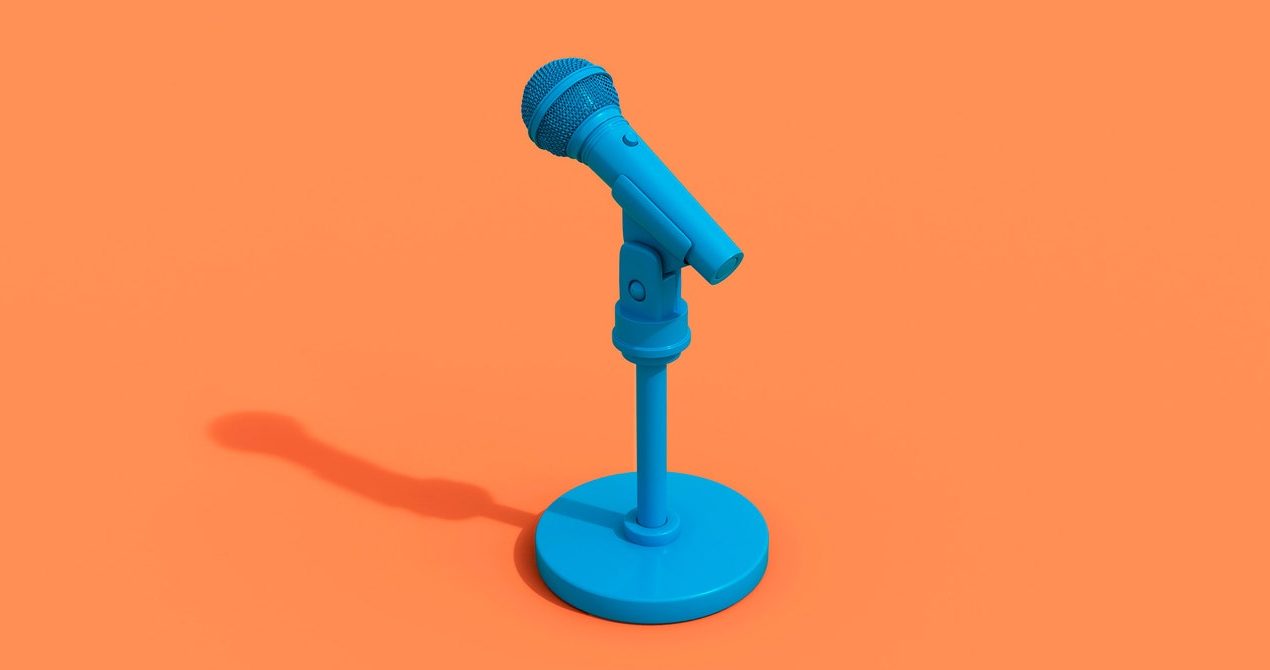Here’s the thing about podcasts: There are too many of them.
More than 4 million, to be precise, according to the database Podcast Index. In the past three days alone, nearly 103,000 individual podcast episodes were published online, a deluge of audio content so voluminous that listeners need never run out of options. You could spend the rest of your life working through the existing true crime catalog on Apple Podcasts or the sports chat shows on Spotify and end up dying of old age in 2070 while Michael Barbaro reads an ad for Mailchimp to your corpse.
In the ongoing generative AI gold rush, though, opportunistic entrepreneurs are looking for entry into even the most saturated markets. A wave of startups, including ElevenLabs, WondercraftAI, and Podcastle, have introduced easy-to-use tools to generate AI voices in minutes. So, as if on cue, AI podcasts are here, whether anyone asked for them or not.
In these early days, nobody’s keeping track of how many listeners this strange new genre of podcast has. Major hubs like Apple Podcasts and Spotify don’t have separate charts for robot hosts. There are, however, a few individual AI podcasts that have clearly found audiences, at least for their first crop of episodes.
The first AI-generated podcast to take off cheated a little—it used the cloned voice of the world’s most popular human podcast host. The Joe Rogan AI Experience is a series of simulations of Rogan gabbing with (equally fake) guests like OpenAI CEO Sam Altman and former president Donald Trump. Shortly after the first episode came out, the real Rogan tweeted a link to it. “This is going to get very slippery, kids,” he wrote.
On YouTube, the dupe racked up more than half a million views. Some listeners didn’t even care that it was AI. “This is actually good enough for me. Good stuff,” one wrote.
The Joe Rogan AI Experience was created by a Rogan fan named Hugo. (He declined to give WIRED his full name because he does not want to be professionally associated with the project.) He has a Patreon to support production of the show and recently turned on monetization on YouTube, but he doesn’t expect to make any real income off it—especially as he’s aware that he doesn’t have consent to use Rogan’s voice or likeness, and that podcasting platforms may end up banning this type of impersonation.
Hugo created the series because he wanted to showcase what AI voice tools can do. Although he carefully edits the episodes to make them flow for listeners—they can take days or weeks to get right—he doesn’t think the conversations themselves are particularly enthralling, even if they’re reasonably accurate imitations. “Apart from listening to the podcast because of its technological advancement, there’s no point,” Hugo says. “It’s just wasted time.”
It’s unclear whether the audience will hang around, or if they simply wanted to check out something unusual and new; Hugo has released four episodes, and each subsequent installment has pulled a smaller audience than the last.
WIRED spoke with several other creators of AI-generated podcasts who echoed Hugo’s take. They enjoyed playing around with the technology, but they consider the end results a byproduct of experimentation. Israel-based sound engineer Lior Sol, for example, created a trippy podcast called Myself, I Am and That using ElevenLabs’ tools. He made a clone of his voice and then a clone of that clone in an extremely meta conversation. “I’m definitely having fun with it,” he says. But that doesn’t mean he’s chasing big audiences. Right now, his listeners number in the dozens. His friends like it, he likes it—it’s an art project, and a chance to fiddle around with new tech, not an attempt to make something commercial.
Source




